"You have termites in your house." Those are words that no homeowner ever wants to hear. Termites are responsible for over $5 billion in property damage in the U.S. annually, and the average cost to repair termite damage in homes with active termites is more than $9,000*.
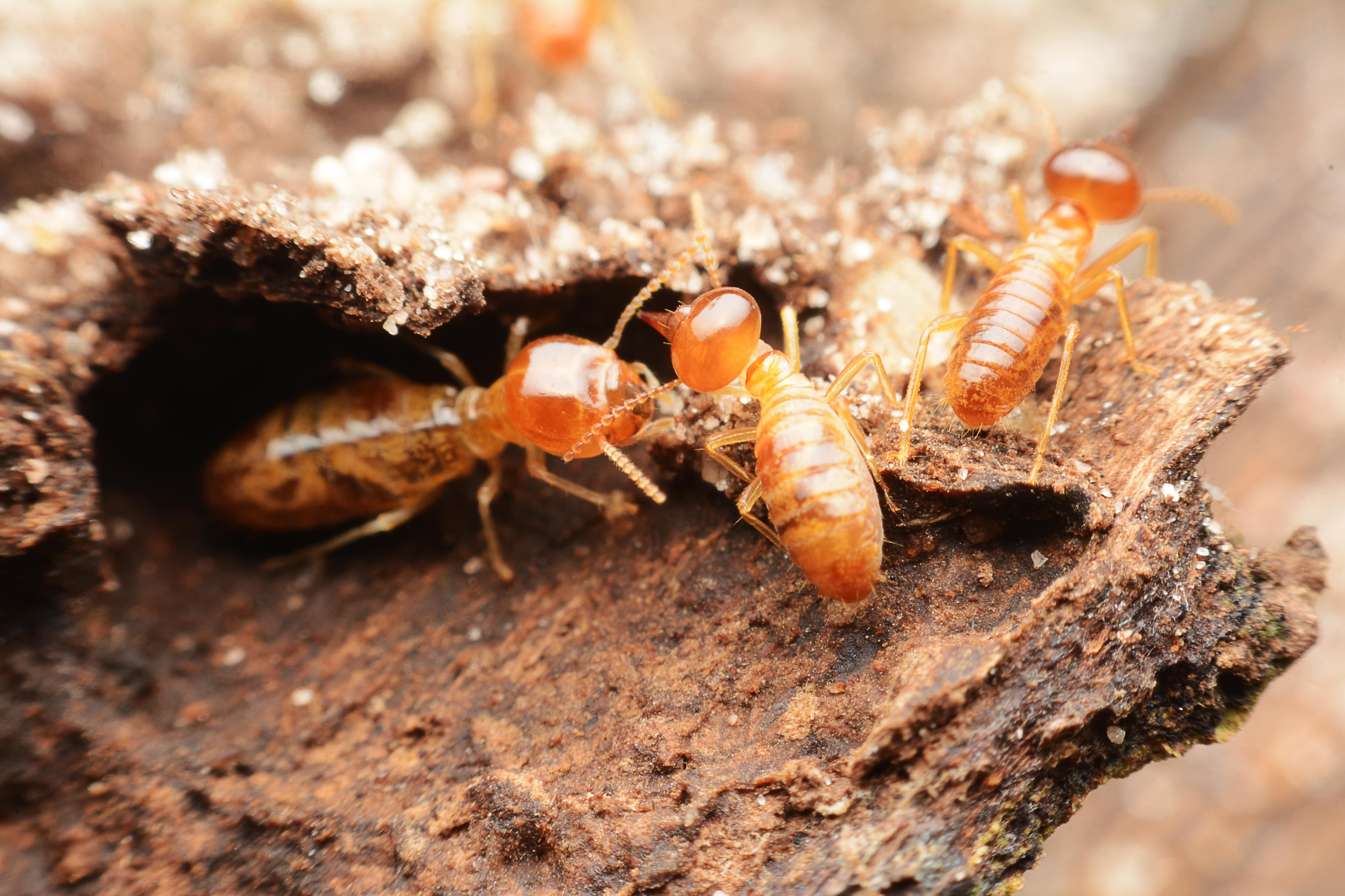
Though termites can be found throughout the United States, the highest pressure areas tend to be in the South, Southeast, West and Southwest where they thrive in warm climates. Continue reading to find out how you can help get rid of termites. Plus, you'll learn what to do to help ensure these pests don't infest your property.
This guide will walk you through the different options for termite control. Are DIY termite treatments the best solution for you? When should you get professional termite extermination? Learn how to identify various types of termites, how to get rid of termites, and how to help prevent termites from damaging your home.
Signs of termite infestation
Unfortunately, termite infestations can be active before you see any evidence. Still, knowing what to look out for can help prevent further and more costly damage to your home. Keep an eye out in your home for these signs of termites listed below. If you notice any of these signs, you should have a pest control professional inspect your home right away to assess the situation.
Mud tubes
Mud tubes are a sign of subterranean termites, which live underground. These tubes are “termite highways" that connect colonies to food sources, allowing workers to travel, search for food and bring it back to the colony. They often appear where your home's foundation meets the ground. Mud tubes can also be spotted inside your home, including in your walls, on your baseboards, drywall, bookcases, ceiling and molding around door and window frames.
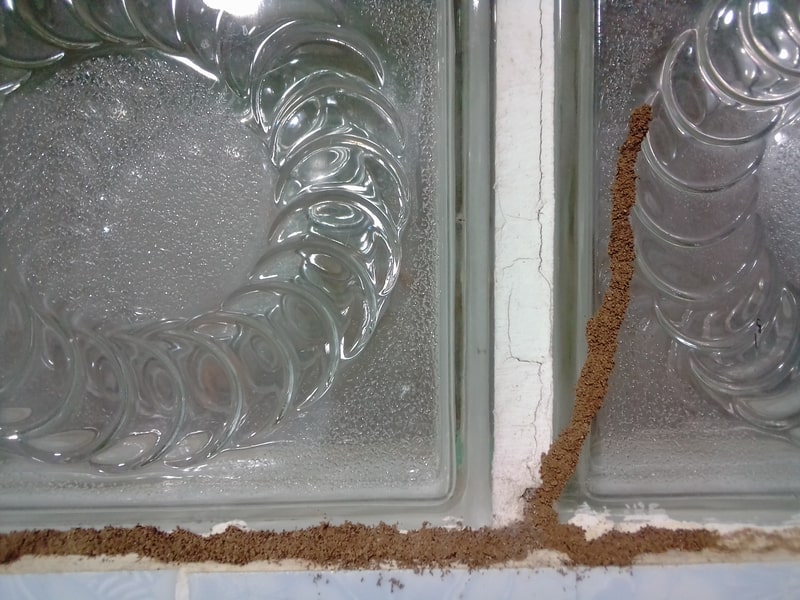
Blistered wood
Blistered wood is another sign that subterranean termites have been feeding beneath the surface of the wood. If your wood has a blistered or bubbled appearance, it's time to call for a professional inspection.
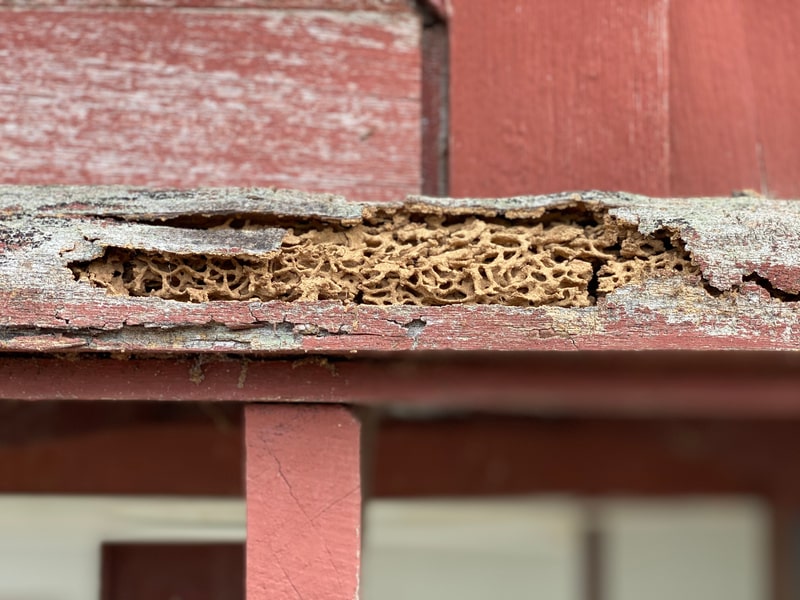
Droppings (or frass)
Drywood termites produce droppings that look like small, hexagonal-shaped pellets about the size of coffee grounds. These termite droppings are called “frass." Piles of these droppings under furniture, near baseboards, or around other wooden structures may indicate drywood termite activity.
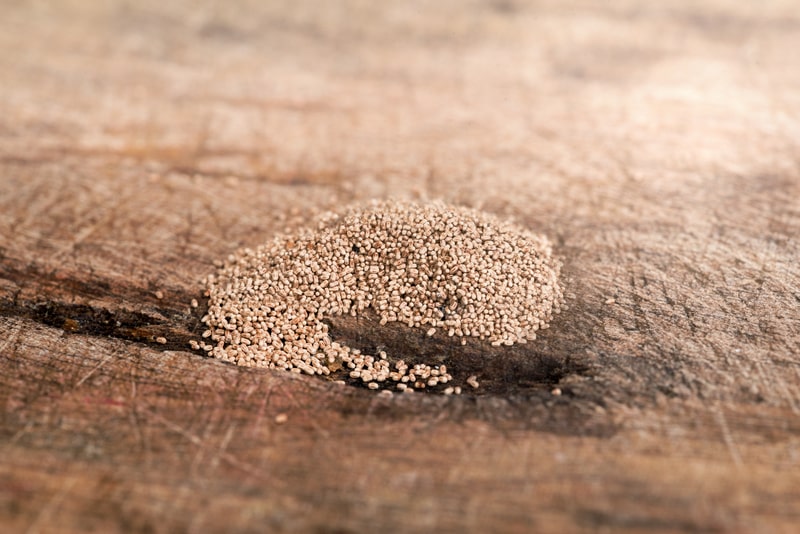
Hollow wood
As termites tunnel through wood, they create long galleries inside the wood that weaken its structure and cause damage. Wood that termites damage will often produce a hollow sound when tapped and look similar to a honeycomb inside. This damage can happen behind walls and under floors, among other places in your home.
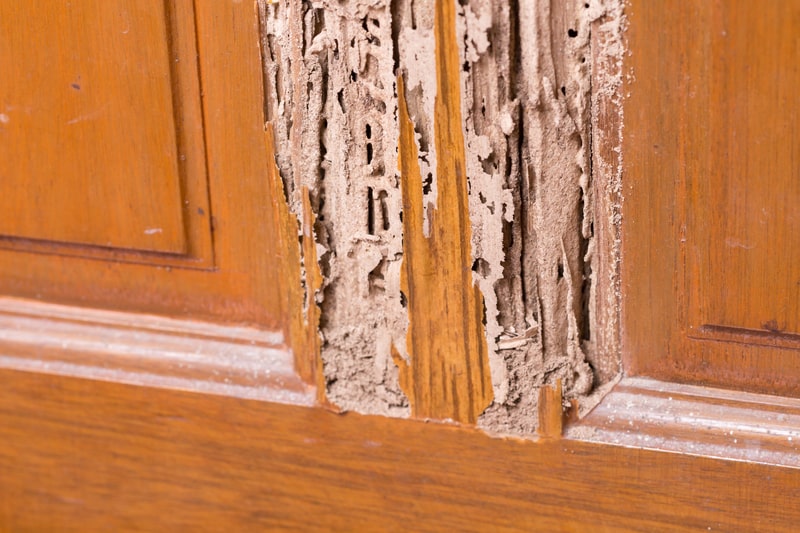
Related > Why are There Termite Swarmers?
Termite swarm evidence
During the spring and summer months, some termite colonies release swarms that fly off to start new colonies. Swarming typically occurs during the day for eastern subterranean termites, and at night for Formosan termites and drywood termites. While it's possible to see a swarm in action, you may also see the end results indicating that a termite swarm has happened. One of the signs of a termite swarm is seeing a pile of discarded wings. These wings are typically found indoors around windows, which is a light source for the termites to fly towards. If you're wondering how to get rid of flying termites, contact a professional. They will be able to determine what kind of termites you have, and what treatment method will help get rid of them.
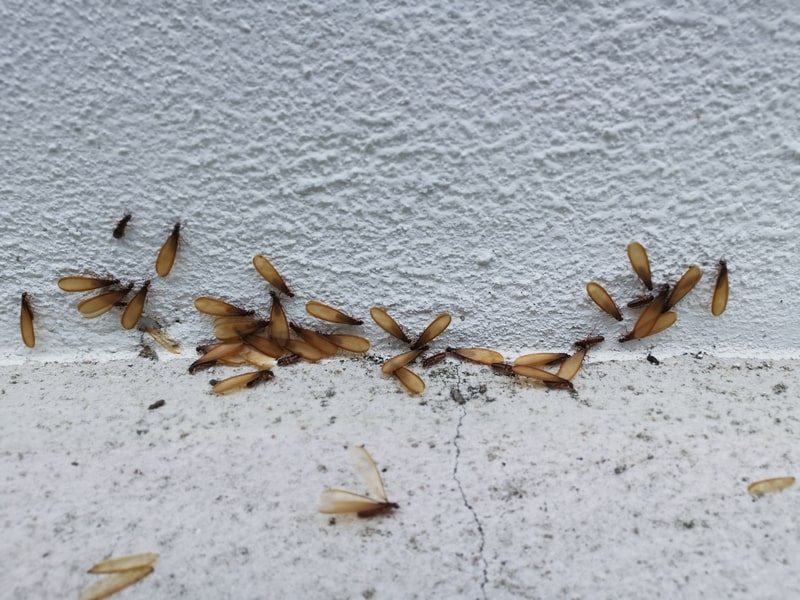
Seeing live termites
Termites often stay hidden within mud tubs or tunnels they create within walls, building their colonies. In most cases, you will only notice the evidence of termites and rarely see them in action. However, if you happen to see termites swarming or if you spot termites crawling around, act quickly. Termites aren't loners, so if you see even a few, it's a safe bet that there could be many more living in your home.
Even if you don't notice the signs of termites mentioned above, that doesn't necessarily mean they aren't there. Termites can be active in your home before you notice them, causing damage to your home and its structure along the way.
Seeking professional assistance to help get rid of termites is crucial to staving off expensive repairs. That's why it's helpful to talk to a Terminix® termite control expert and schedule an annual inspection to guard your home against future termite activity and damage.
What are the different types of termites?
There are roughly 2,000 different species of termites throughout the world. Fortunately, you won't have to worry about the majority of those species invading your home, if you live in the U.S. For all intents and purposes, there are two types of termites that you need to be concerned with: subterranean termites and drywood termites.
If you see what appears to be termites active in your home or swarming, it's important to be able to tell these pests apart from other insects that damage wood – including flying ants, such as winged carpenter ants when they're ready to swarm. Here are some quick tips to tell carpenter ants and termites apart.
Both termites and carpenter ants have two sets of wings. However, all four of a termite's wings are of equal size and length, often longer than its body. On the flipside, a carpenter ant's rear wings are shorter and slightly smaller than its front wings. Additionally, while both termites and carpenter ants have bodies with three segments, a termite is more easily distinguished by its broad waist in comparison to the far more narrow waist of a carpenter ant.
Knowing which type of insect has infested your home is an important part of professional pest control. Once you determine termites have invaded, you must act quickly in order to minimize the damages these pests can cause if left unchecked.
How to get rid of subterranean termites
Given the extensive damage that termites can cause, it's ill-advised to attempt to make termite removal a DIY effort, as this practice is rarely effective and the cost of failure can be very expensive. Professional pest inspectors begin by looking to identify the signs of a subterranean termite infestation, including checking crawl spaces and other areas where your home comes in contact with the ground. As their name suggests, subterranean termites live below ground in colonies. They need soil contact to survive and use tunnels below ground — and mud tubes above ground — to travel into homes in search of food. Their food is the wood that forms your home's structure.
However, there are some species of subterranean termites, like Formosan termites, that can swarm and land in the upper part of your house where they can establish colonies without soil contact. This sometimes happens in the Gulf Coast area.
The largest Formosan termite colonies can chew through about a pound of wood per day, though most subterranean colonies chew through about one pound every month.
Terminix employs several methods to control a subterranean termite infestation. Depending on the nature of your infestation, a Terminix pest control specialist may recommend bait stations, which will be placed at strategic points in or around your home. Termites then carry the bait back to their colonies and spread the poison to their population.
Another method of control your pest specialist may recommend is a liquid treatment, which involves treating the soil around your home to help prevent subterranean termites from entering your home in the first place.
How to get rid of drywood termites
Unlike subterranean termites, drywood termites are a type of termite that do not need soil contact to survive. They live in wood that's above ground, including inside homes. Drywood termites are most common in Florida and California, but they can be found in other states when infested items are brought into homes.
If you spot signs of drywood termites, such as droppings (frass), then you need to act immediately.
Treating a drywood termite infestation can be tricky. There may be more than one infestation site, and these sites can be difficult to find unless you're trained in how to do so. For these reasons, and more, it's necessary to call a termite control professional for a drywood termite inspection and treatment.
One of the treatment methods a Terminix pest control specialist may recommend to help prevent drywood termites if no infestation is found is our Drywood Defend System. This involves an initial inspection to correctly diagnose your termite issue, then creating a preventive treatment barrier pinpointing areas where drywood termites may be able to breach your walls. Finally, the Terminix Drywood Defend System involves setting up annual inspections to check for termites and reinforce the treatment barrier.
Treatments for drywood termites
Unfortunately, there isn't a lot that you can do on your own to prevent drywood termites from invading your home. Once they've entered, there are no real DIY termite remedies that are effective.
Contrary to popular belief, however, use of fumigants is not always required to effectively treat drywood termites. Rather, it's just one potential solution. Your pest control specialist will advise you if fumigation is required. If so, you may be required to leave your home for several days in order to treat. However, DIY fumigation is not an option for homeowners, and best left to professionals who have a deeper understanding of safe and proper use and procedures.
How to prevent termites
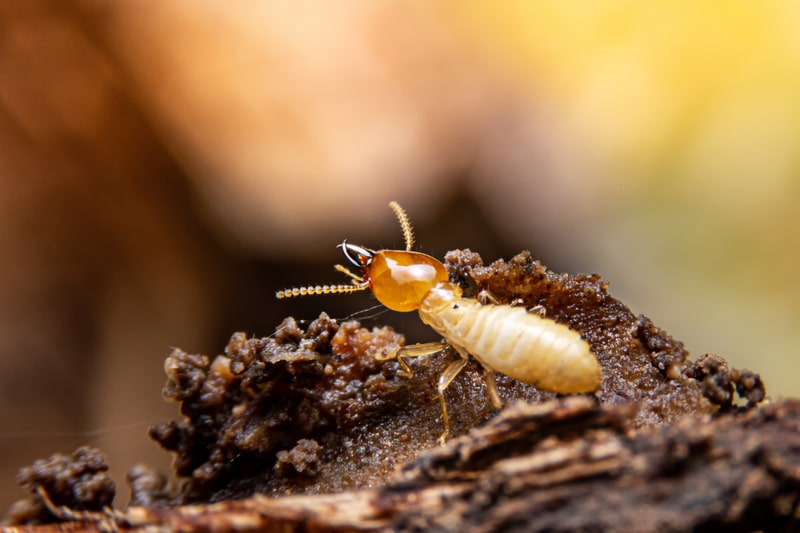
Because subterranean termites most often stay hidden, their attack on your home can go undetected. Your best defense is a good offense. There are some things you can do yourself to help prevent termites from infesting your home:
- Keep mulch at least four inches from your home's foundation.
- Make sure your home's siding doesn't extend down to the soil.
- Store firewood away from your home.
- Watch out for any leaks and moisture in and around your home, and have them addressed immediately.
- By following the list above, you will help keep things that attract termites to your home at a minimum.
What is the fastest way to get rid of termites?
If you think you have a termite problem, or you notice one or more of the signs mentioned above, you probably need professional termite help. A DIY solution may seem like the fast and affordable way to deal with your termite problem, but it may likely cause more harm than good and wind up costing you more in the long run.
Related > Don't DIY That: Termite Control
DIY termite treatments aren't effective. Another DIY consideration is cost. If the proper treatment method isn't used, or if the treatment is ineffective, you may wind up spending more money and causing yourself additional frustration. When you consider the cost of termite treatment versus the cost of damage, your savings can disappear very quickly.
You can't put a price on peace of mind. Take the effective route to get rid of your termites and schedule a FREE termite inspection with Terminix today!
*Average repairs: $8,566 according to 2018 survey of independent contractors in the Terminix network. Estimated treatment: $1,419. Every home is different; repair and treatment costs may vary.


